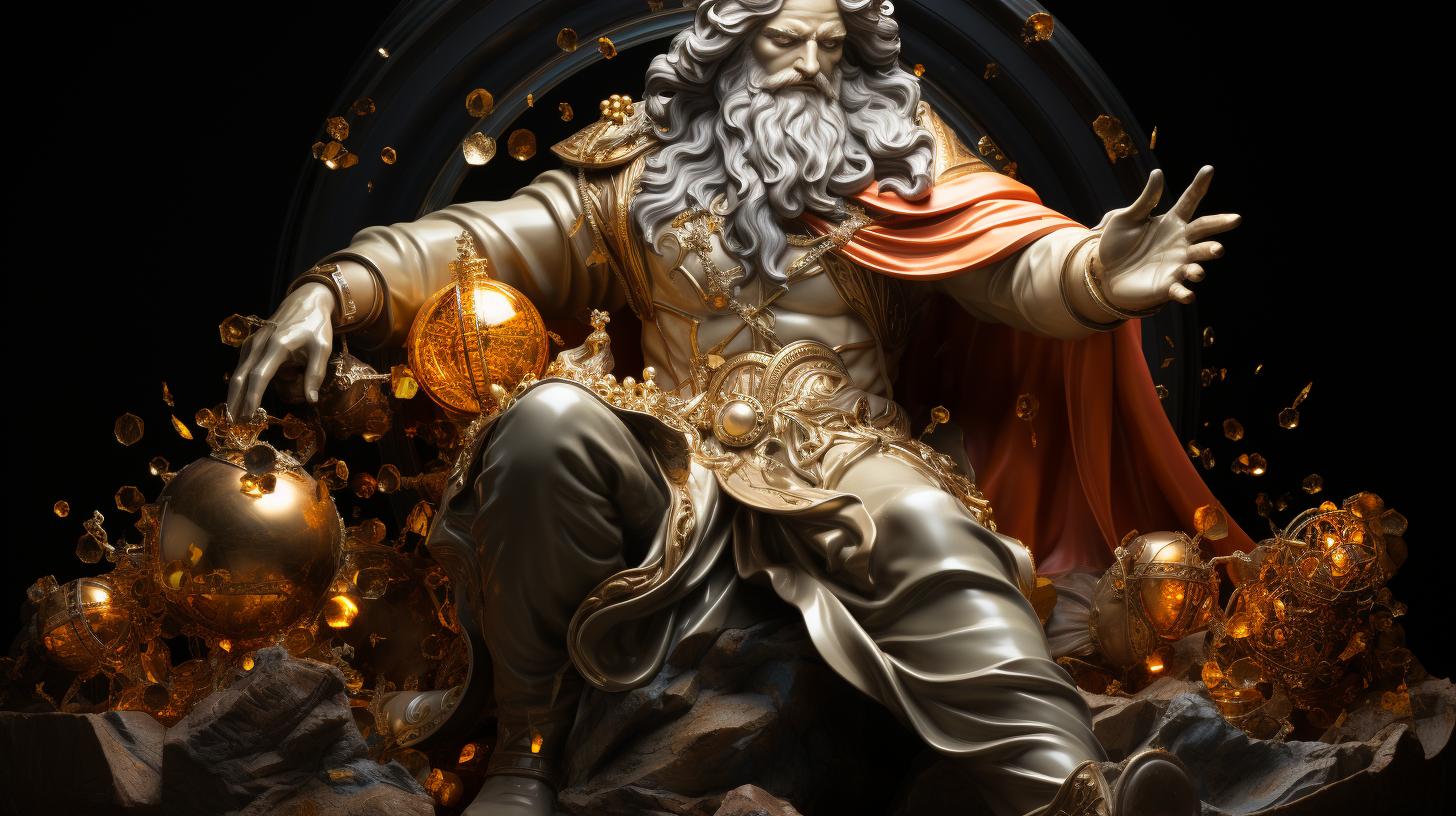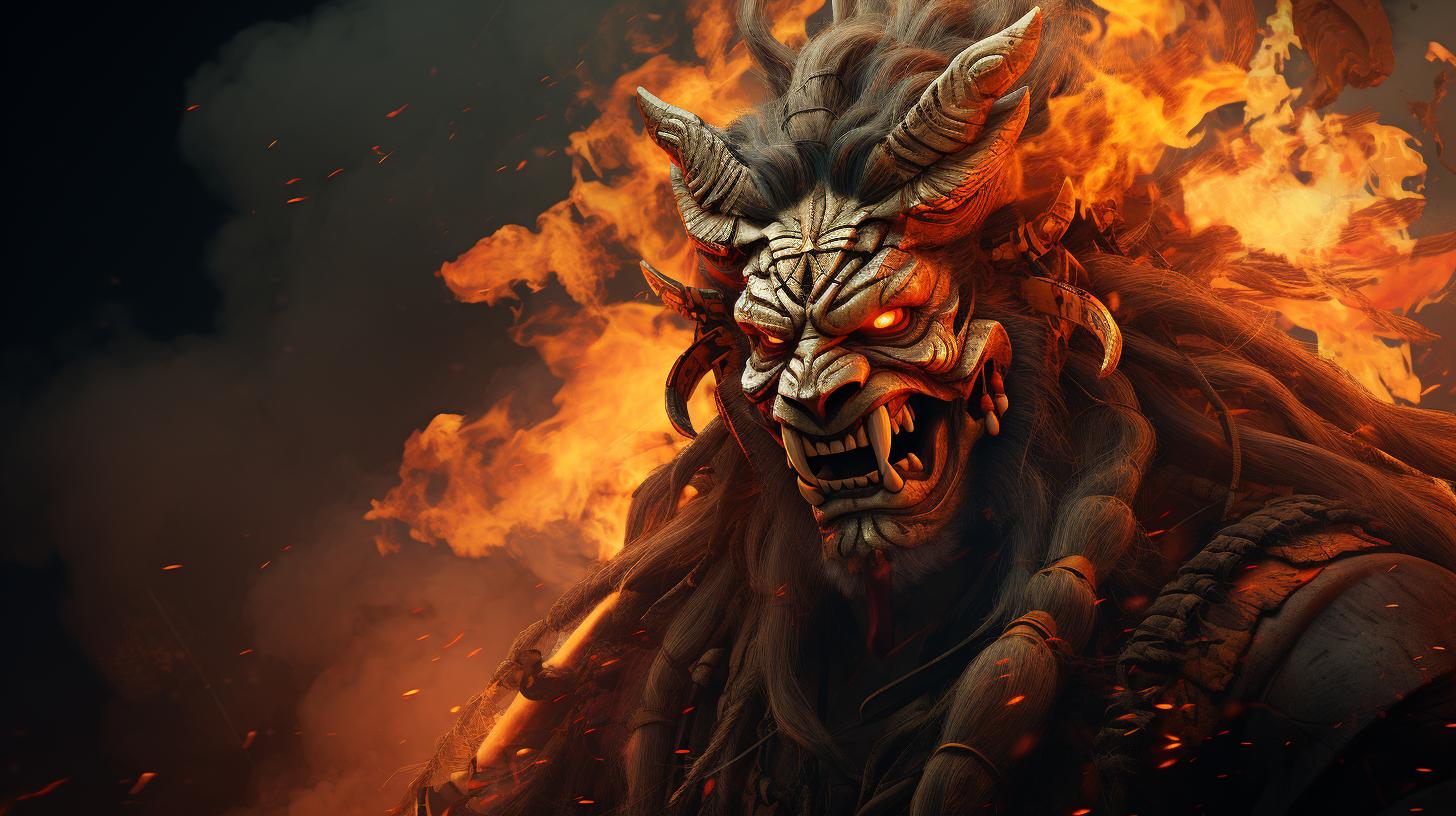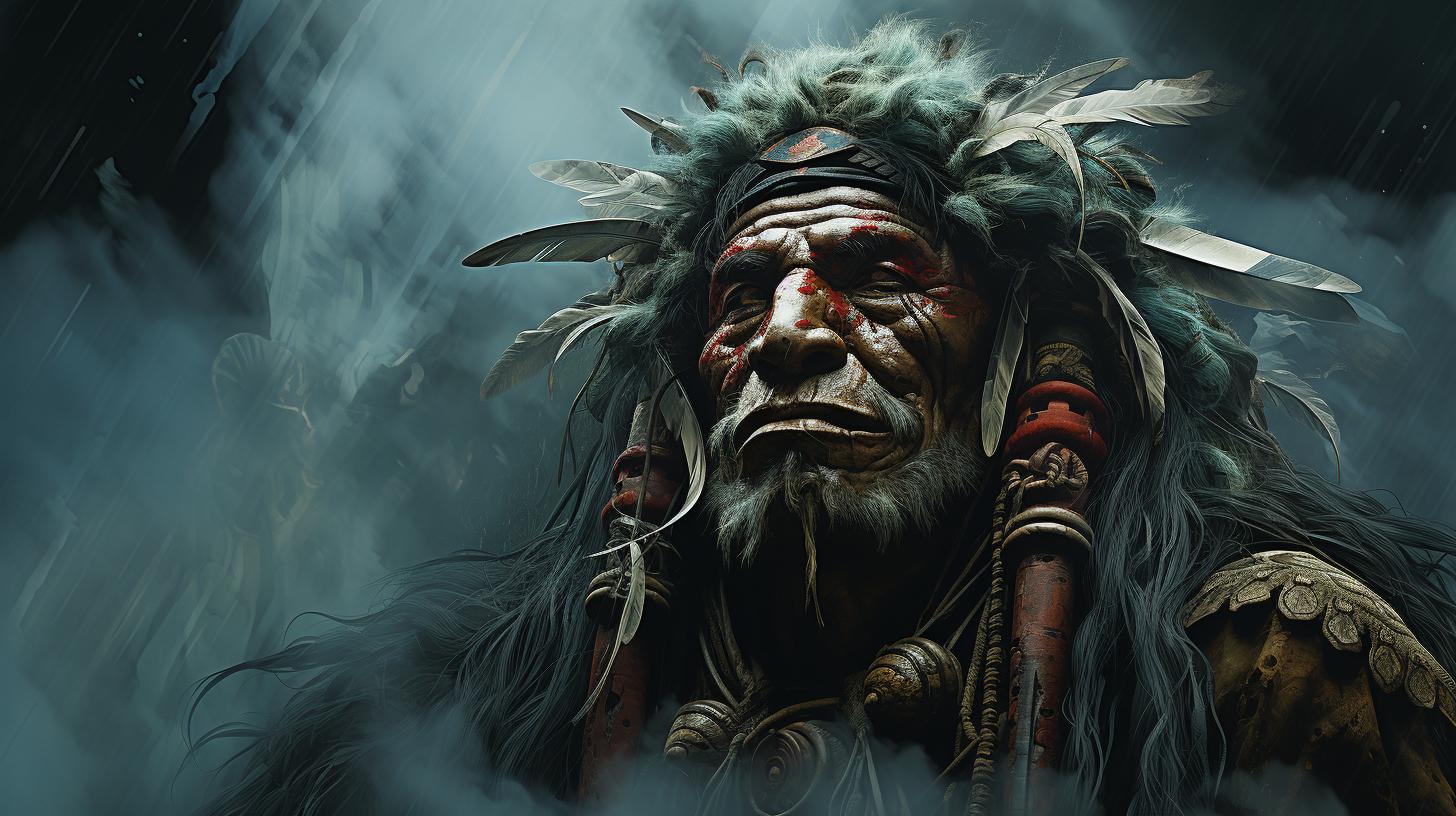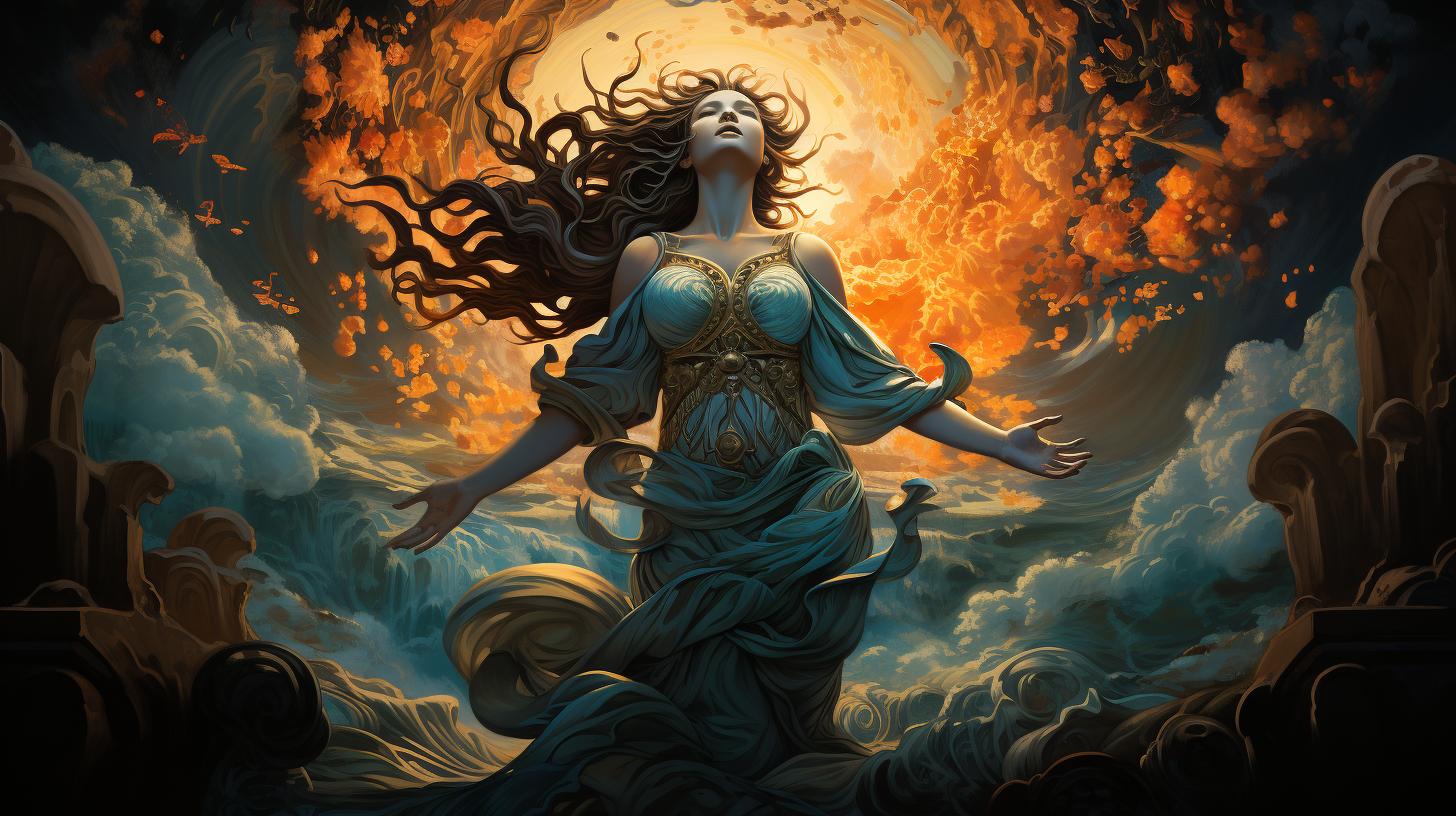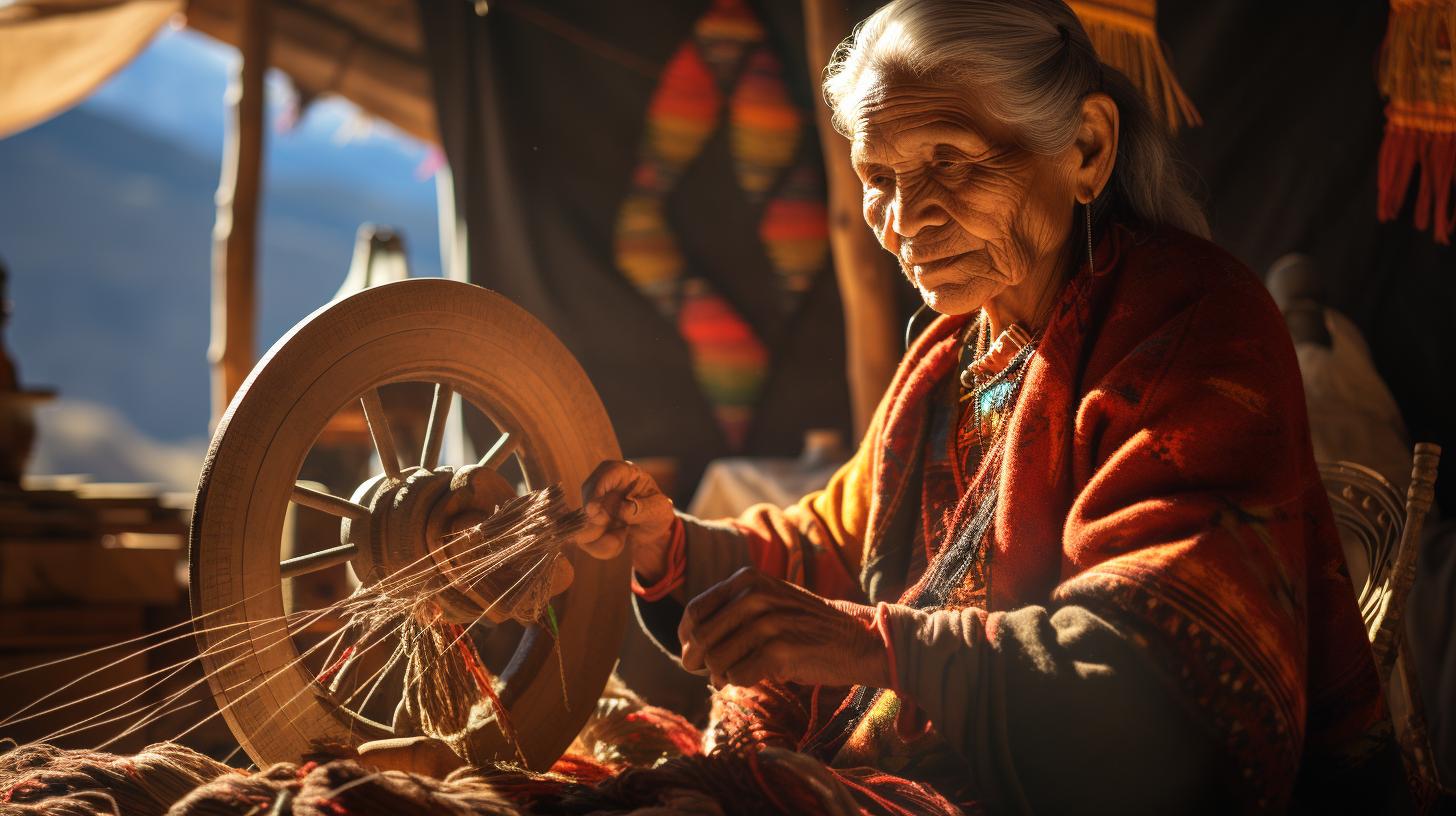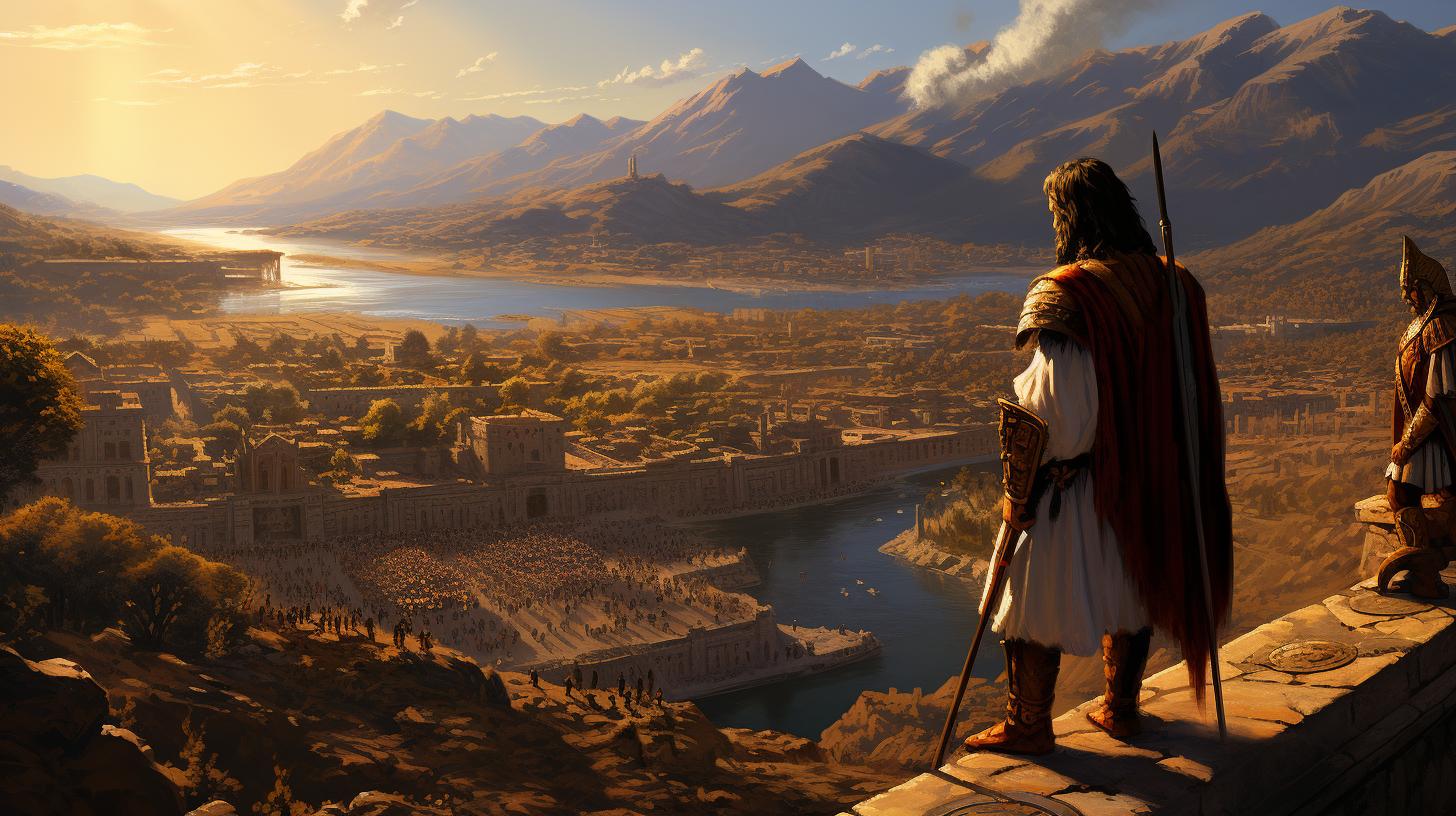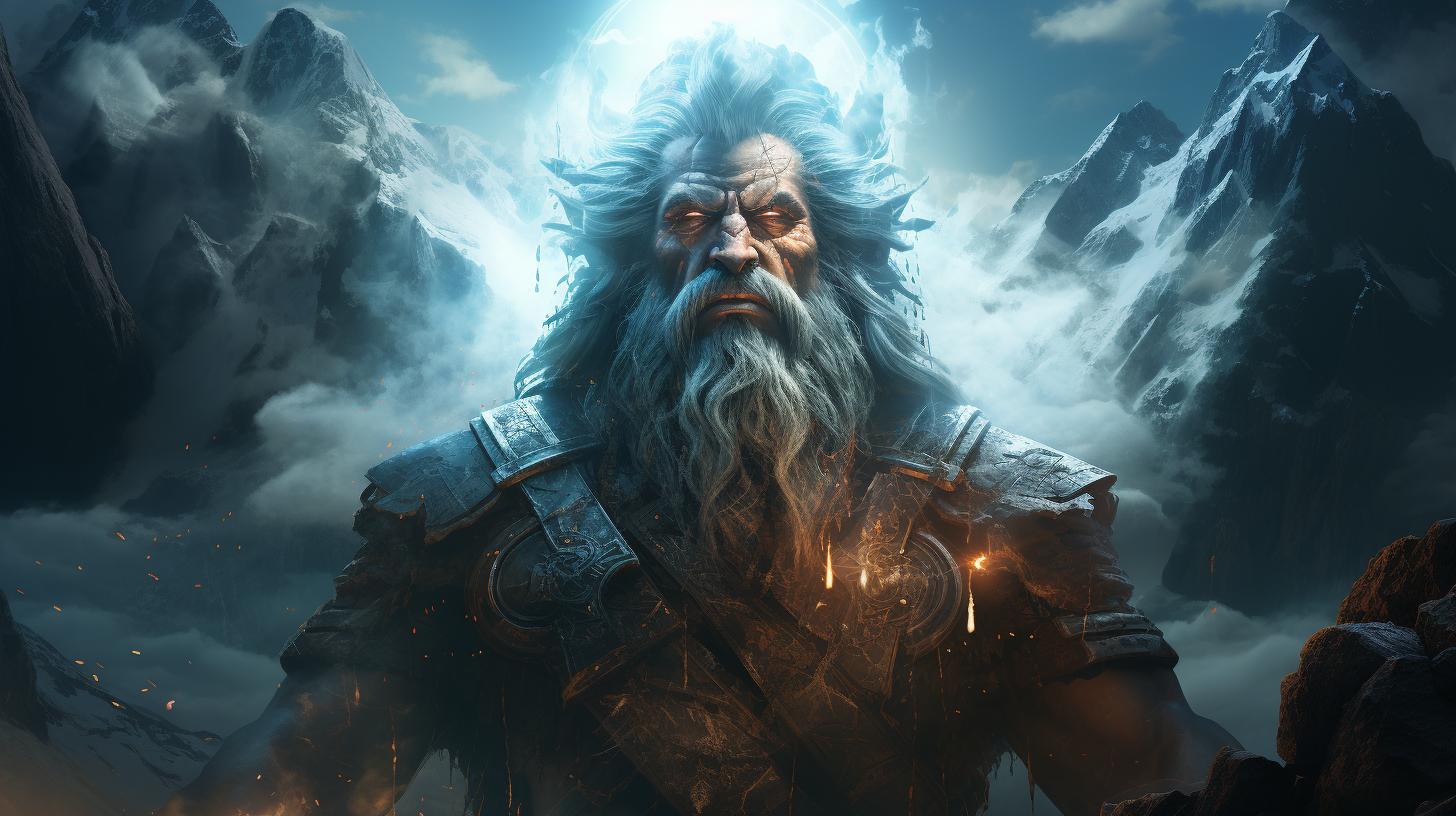Discover the Fascinating Legends of Urcaguary, the Inca God
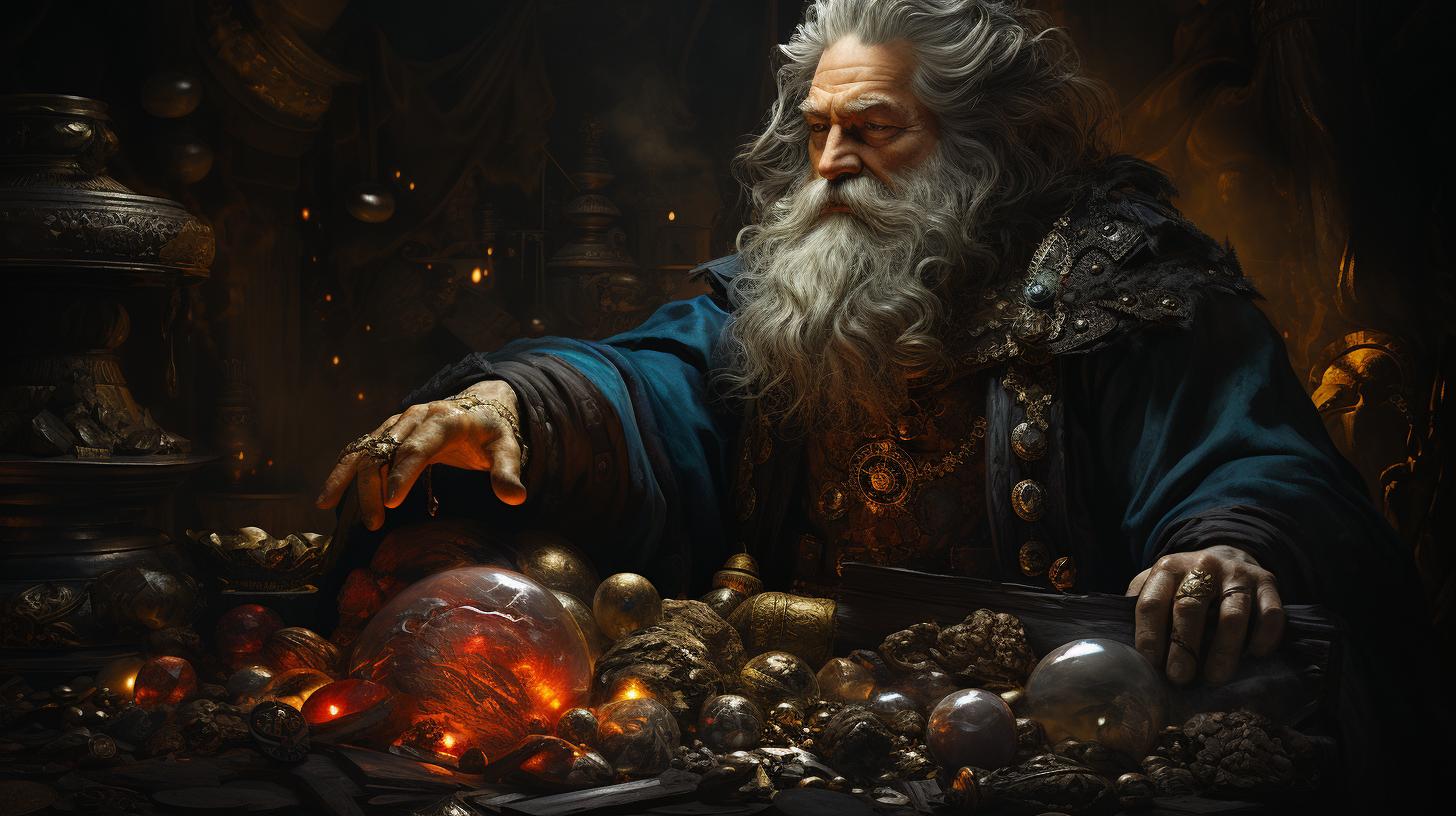
The mythology of the Inca Empire is rich with fascinating deities, including Urcaguary, the enigmatic Inca god. Represented as a hybrid creature, part deer and part serpent, Urcaguary holds domain over underground treasures and precious metals.
Associated with him are the mysterious beings called Ekkeku, who bestow good luck and fortune on the faithful. In this article, we delve into the story of Urcaguary, explore his symbolism, and uncover the significance of his role in Inca mythology.
We also shed light on the underground realm and the intriguing connection between Urcaguary and Ekkeku.
The Mythology of the Inca Empire
The Inca Empire, known for its rich cultural heritage, had a belief system deeply rooted in mythology. This section delves into the fascinating world of Inca mythology, exploring its origins and the important role gods played in Inca culture.
Origins and Beliefs of the Inca Civilization
The Inca civilization flourished in the Andean region of South America, specifically in present-day Peru, from the 13th to the 16th century. According to Inca mythology, their origin can be traced back to the sun god Inti, who sent his son Manco Capac and his sister-wife Mama Ocllo to Earth.
They emerged from the waters of Lake Titicaca, establishing the city of Cusco and becoming the first rulers of the Inca Empire.
The Inca people believed in a hierarchical social structure, where the ruling class held immense power.
Religion played a central role in their society, with the emperor being considered the divine Son of the Sun, and his word being regarded as law.
Understanding the Role of Gods in Inca Culture
In Inca culture, gods held great significance and were revered as supernatural beings with immense powers.
They were believed to have control over various aspects of life, including natural phenomena, agriculture, and fertility. These gods played a vital role in maintaining the harmony and balance of the cosmos.
The Inca pantheon consisted of numerous deities, each associated with specific domains and attributes. Some of the prominent gods worshipped by the Inca civilization included Inti, the sun god; Mama Killa, the moon goddess; href=”https://oldworldgods.com/inca/inca-god-viracocha/”>Viracocha, the creator god; and href=”https://oldworldgods.com/inca/pachamama-inca-goddess/”>Pachamama, the earth goddess.
These gods were not only worshipped but also considered ancestors who provided guidance and protection to the Inca people.
Through elaborate rituals and ceremonies, the Inca civilization sought to honor and appease these gods, ensuring their continued favor and blessings.
Gods were worshipped in magnificent temples, such as the Coricancha, where offerings and sacrifices were made.
- Semantic HTML tags
- Ordered lists and subheadings
- Short paragraphs
Urcaguary: The Enigmatic Inca God
Urcaguary, a deity of great intrigue in Inca mythology, holds a unique place in the pantheon of gods worshipped by the Inca civilization.
This section unravels the captivating story of Urcaguary, shedding light on the symbolism and representation attributed to this enigmatic god, as well as exploring his significance in Inca mythology.
Unveiling the Story of Urcaguary
The origins and narrative surrounding Urcaguary’s existence have fascinated scholars and historians alike.
Delving into ancient texts and oral traditions, we uncover the captivating tale that surrounds this revered deity. Stories of his origins, accomplishments, and role in Inca society provide a glimpse into the powerful figure of Urcaguary.
Symbolism and Representation of Urcaguary
Urcaguary’s representation as a hybrid creature, combining the features of a deer and a serpent, holds profound symbolic meaning in Inca culture. This section explores the intricate symbolism embedded within the physical portrayal of Urcaguary and unravels the deeper spiritual significance associated with his unique form.
Significance of Urcaguary in Inca Mythology
Within the complex web of deities worshipped by the Inca civilization, Urcaguary occupies a distinctive position. Understanding his significance within Inca mythology provides valuable insights into the beliefs, values, and cultural practices of this ancient empire.
Explore the role Urcaguary played in shaping the religious and spiritual aspects of Inca society.
Exploring the Domain of Urcaguary: Underground Treasures and Riches
The mythology of the Inca Empire delves into the fascinating concept of underground gods and the treasures hidden beneath the earth’s surface. This section will shed light on the domain of Urcaguary, the Inca god associated with underworld wealth and riches.
Let’s embark on a journey to uncover the mysteries surrounding Urcaguary’s underground realm.
The Concept of Underground Gods in Inca Culture
In Inca culture, the belief in underground gods and their connection to earthly riches was deeply rooted. They believed that beneath the surface, a hidden world existed, filled with treasures waiting to be discovered.
These underground gods held immense power and significance in Inca mythology, with Urcaguary standing out as the deity associated with these hidden treasures.
Urcaguary’s Role as the God of Underworld Wealth
Urcaguary played a pivotal role as the guardian and provider of underground wealth in Inca mythology.
As the god of precious metals, jewels, and treasures found beneath the earth, his influence extended beyond material wealth. Inca society revered Urcaguary, seeking his blessings for prosperity and abundance in their lives.
Legends and Myths Surrounding Urcaguary’s Underground Realm
The underground realm of Urcaguary is shrouded in captivating legends and myths passed down through generations. These stories narrate encounters with the deity and his guardian creatures, the Ekkeku, who are believed to distribute good fortune and luck.
Legends speak of brave individuals who ventured into the depths, facing obstacles and trials to secure Urcaguary’s blessings.
Whether it is the allure of hidden treasures or the profound symbolism of Urcaguary’s underground domain, exploring this aspect of Inca mythology unveils a rich tapestry of beliefs and traditions that continue to captivate our imagination even today.
Ekkeku: The Mysterious Beings Associated with Urcaguary
Ekkeku, an intriguing presence in Inca mythology, holds a profound connection with Urcaguary, the enigmatic Inca god. Let’s unravel the nature and significance of these mysterious beings.
Unraveling the Nature of Ekkeku
Ekkeku is a unique entity in Inca mythology, often described as type of mischievous and benevolent creature.
With their origins deeply intertwined with Urcaguary, they are believed to be his loyal attendants and messengers. The exact nature and physical appearance of Ekkeku remain shrouded in mystery, adding to their allure and intrigue.
The Guiding Influence of Ekkeku on Good Fortune and Luck
Ekkeku beings are revered for their association with good fortune and luck. According to Inca beliefs, those who worship Urcaguary and honor Ekkeku are blessed with their positive influence. It is believed that Ekkeku can bestow prosperity, abundance, and protection upon their devotees, making them highly regarded within Inca society.
Connections between Urcaguary and Ekkeku in Inca Worship
Inca worship rituals often involve paying homage to both Urcaguary and Ekkeku. Devotees believe that by seeking the favor and blessings of Urcaguary, they also gain the favor and assistance of Ekkeku.
The symbiotic relationship between these entities highlights their intertwined roles in Inca worship and the importance of acknowledging Ekkeku alongside Urcaguary.
Common Questions about Urcaguary in Inca Mythology:
Who were the Inca Gods?
The Inca civilization had a rich pantheon of gods and goddesses, each playing a specific role in their complex belief system. Alongside Urcaguary, there were other prominent deities worshipped by the Incas, such as Pacha Kamaq, Mama Killa, Kon, Supay, and Viracocha. These gods represented various forces of nature, celestial bodies, and aspects of daily life for the Inca people.
What is the significance of Urcaguary in Inca mythology?
Urcaguary held great importance in Inca mythology as the god of jewelry, precious metals, and treasures found underground. Revered as the provider of wealth and fortune, Urcaguary was believed to bestow blessings upon those who worshipped him.
The Inca people deeply respected and sought the favor of Urcaguary, relying on his divine influence for prosperity and abundance.
How did Urcaguary’s role as the god of underground treasures shape Inca society?
Urcaguary’s association with underground treasures significantly impacted Inca society.
The belief in hidden riches motivated exploration and mining activities, driving the expansion of the Inca Empire. The pursuit of valuable metals, such as gold and silver, fueled trade and economic growth.
Urcaguary’s role as the guardian of these treasures inspired reverence and rituals aimed at securing his favor and ensuring successful mining endeavors.
Are there any rituals or ceremonies associated with Urcaguary worship?
Yes, worship of Urcaguary involved various rituals and ceremonies.
Followers would offer precious metals, jewelry, and other valuable offerings to the god. These rituals were conducted in sacred places, often near mines or underground caves associated with Urcaguary. The Inca priests played a vital role in performing these ceremonies and conducting religious rites to honor and please the god.
How does Urcaguary compare to other deities in Inca mythology?
- Urcaguary, the god of underground treasures, had a distinct role in Inca mythology compared to other deities. While many gods represented natural elements or celestial bodies, Urcaguary focused specifically on wealth and abundance.
- In terms of symbolism, Urcaguary’s unique hybrid form, resembling a deer and a snake, sets him apart from other Inca deities.
- Urcaguary’s connection to the ekkeku, the luck-bringing creatures, further distinguishes him within Inca mythology.
Though each deity played a vital role within the Inca pantheon, Urcaguary’s association with material wealth and his symbolism as a hybrid creature make him a distinct and fascinating figure in Inca mythology.
Unveiling the Mysteries of Inca Mythology: Beyond Urcaguary
As we delve deeper into the rich mythology of the Inca Empire, we discover a fascinating pantheon of gods and goddesses. This section explores other key deities that held significant roles in Inca beliefs, beyond the enigmatic Urcaguary.
Let’s uncover the myths and legends surrounding these divine entities.
Pacha Kamaq: The Creator God in Inca Beliefs
Pacha Kamaq, the supreme deity in Inca cosmology, was revered as the creator of all things. According to Inca beliefs, Pacha Kamaq shaped the world and all living beings, imparting order and purpose to the universe.
As we explore the mythology, we delve into the creation myths and rituals associated with honoring Pacha Kamaq.
The Divine Powers of Mama Killa, Kon, and Supay
Mama Killa, the Moon goddess, held great importance in Inca mythology. She was believed to govern the cycles of the moon and influence fertility and agriculture. Kon, the god of rain and wind, played a vital role in ensuring favorable weather conditions for bountiful harvests.
Supay, the god of the Underworld, ruled over the spirits of the deceased and played a significant role in Inca funerary rituals. We unravel the fascinating stories and attributes of these influential deities.
Exploring Other Key Deities in Inca Mythology
Beyond Urcaguary and the aforementioned gods, the Inca pantheon comprises a diverse array of deities. Each god and goddess embodied specific aspects of nature, society, or cosmic forces. In this section, we explore the tales of Viracocha, Illapa, Catequil, and other significant deities, understanding their roles and beliefs associated with them.
In conclusion, the Inca Empire’s mythology encompasses a vast and intricate web of gods and goddesses. While Urcaguary holds a unique place as the god of treasures and wealth, other deities like Pacha Kamaq, Mama Killa, Kon, and Supay offer further insights into the Inca’s spiritual beliefs and the interconnectedness of the natural and spiritual worlds.
Legacy and Influence of Inca Mythology in Modern Times
The rich mythology of the Inca civilization continues to leave its mark on modern society, with its cultural significance and impact evident in various aspects of our lives. By exploring the legacy and influence of Inca mythology, we can gain a deeper appreciation for the enduring power and relevance of these ancient beliefs.
Cultural Significance and Preservation of Inca Mythology
Inca mythology holds great cultural significance, not only for the descendants of the Inca people but also for people worldwide. The preservation of Inca mythology helps maintain a connection to their ancestral roots, fostering a sense of identity and cultural pride among those who embrace it.
Museums, cultural centers, and archaeological sites dedicated to Inca mythology play a crucial role in preserving and showcasing the rich heritage of this ancient civilization.
Furthermore, the reverence for Inca mythology is reflected in various traditional festivals and ceremonies that continue to be celebrated in regions influenced by the Inca Empire.
These vibrant events serve as a testament to the lasting impact of Inca beliefs and serve to keep their traditions alive in contemporary society.
Inca Mythology’s Impact on Art, Literature, and Entertainment
The allure of Inca mythology has captivated artists, writers, and filmmakers across the globe.
Its mystical and symbolic elements have inspired countless artworks, sculptures, and paintings that depict the gods, heroes, and creatures from Inca mythology. These artistic creations not only convey the beauty and complexity of Inca beliefs but also contribute to the wider appreciation and understanding of this ancient culture.
Moreover, Inca mythology has provided a rich source of inspiration for literature and storytelling. Many authors have drawn upon the enchanting tales and legends of Inca gods and heroes to craft compelling narratives that transport readers into the captivating world of ancient civilizations.
From historical novels to fantasy epics, Inca mythology continues to inspire literary works that keep the spirit of these ancient stories alive.
In the realm of entertainment, Inca mythology has also left an indelible mark.
Films, television shows, and video games often incorporate the mystical and adventurous aspects of Inca mythology into their narratives, captivating audiences and introducing them to the wonders and mysteries of this ancient civilization.
- Artistic creations, from paintings to sculptures, capture the essence of Inca mythology
- Literature draws upon Inca mythology to create captivating narratives
- Entertainment mediums like films and video games incorporate Inca mythology, captivating wider audiences
As we continue to explore the legacy and influence of Inca mythology, it becomes apparent that these ancient beliefs have transcended time, leaving an indelible mark on various aspects of modern society.
From cultural preservation to artistic expressions and captivating storytelling, Inca mythology remains a source of fascination and inspiration for people worldwide.
.











